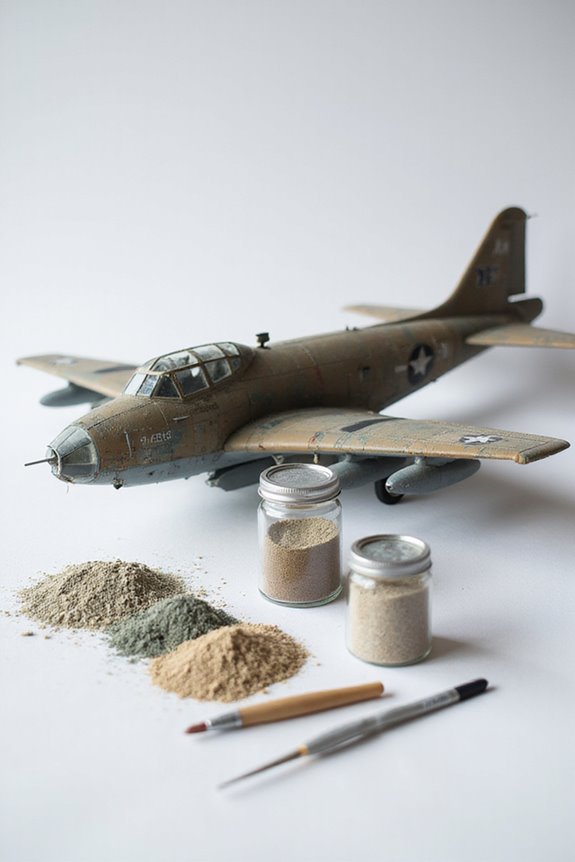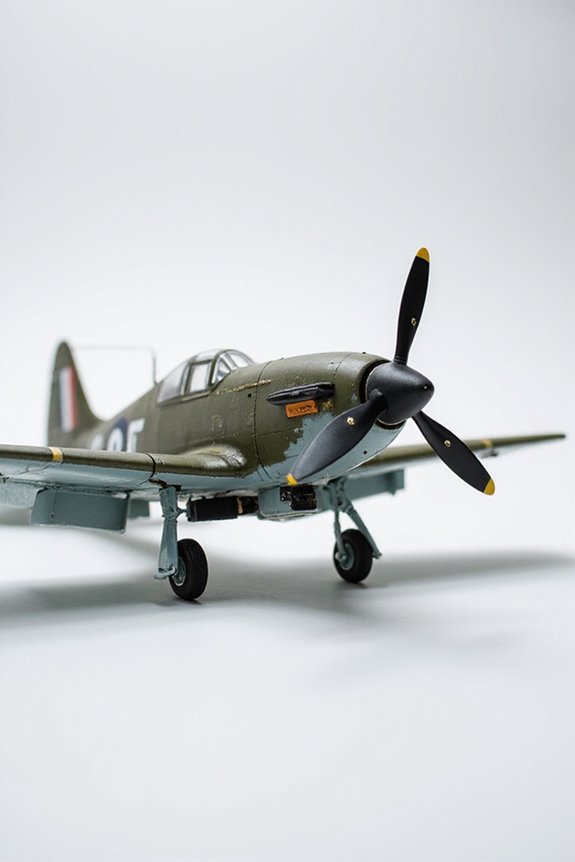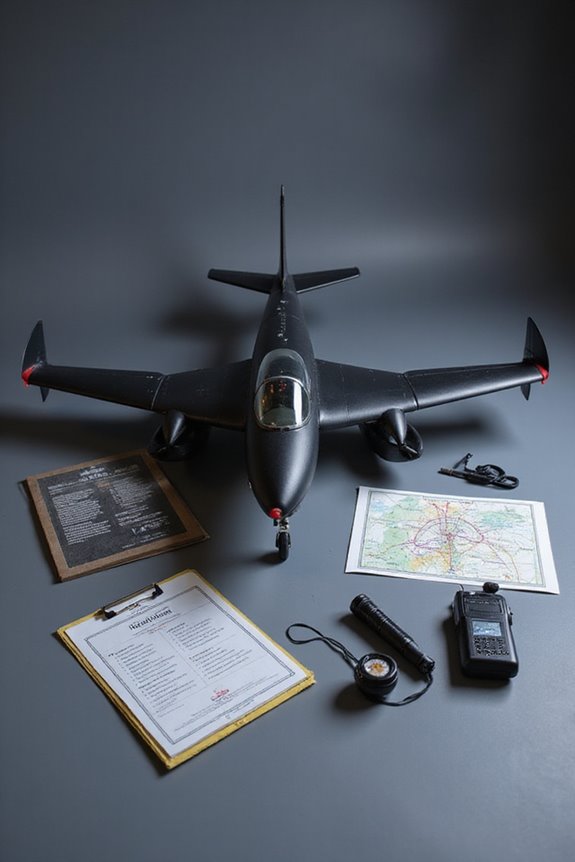Flying in storms can be a wild ride, kind of like a roller coaster without a seatbelt. Turbulence leads to injuries, especially if we’re unbuckled. Also, thunderstorms can mess with flight schedules and routes, adding delays and fuel costs. Visibility can plummet, making it tough for pilots to see where they’re going, while lightning poses risks to aircraft systems. There’s much more about these challenges, so let’s explore what pilots and technology do to keep us safe in stormy skies!
Key Takeaways
- Thunderstorms can cause significant disruptions to flight schedules, leading to delays and increased operational costs for airlines.
- Lightning poses a serious risk to aircraft, potentially damaging navigation systems and causing operational malfunctions.
- Turbulence associated with storms is a leading cause of passenger and crew injuries when not buckled up.
- Visibility challenges due to heavy rain and fog require pilots to rely heavily on instruments for navigation.
- Sudden wind shifts and gusts in storms increase pilot workload, demanding quick and effective decision-making.
Turbulence and Flight Safety
When we think about flying, we often picture smooth skies and hassle-free travel. Unfortunately, turbulence incidents are on the rise, increasing by 55% over the last 40 years. This means our flights are getting bumpier, and it’s mostly due to climate change.
Did you know that turbulence is the leading cause of injuries for passengers and crew during non-fatal aviation accidents? Each year, around 58 passengers in the U.S. get hurt from turbulence while not buckled up. It’s like riding a roller coaster without a seatbelt—definitely not recommended!
Impact of Thunderstorms on Flight Operations
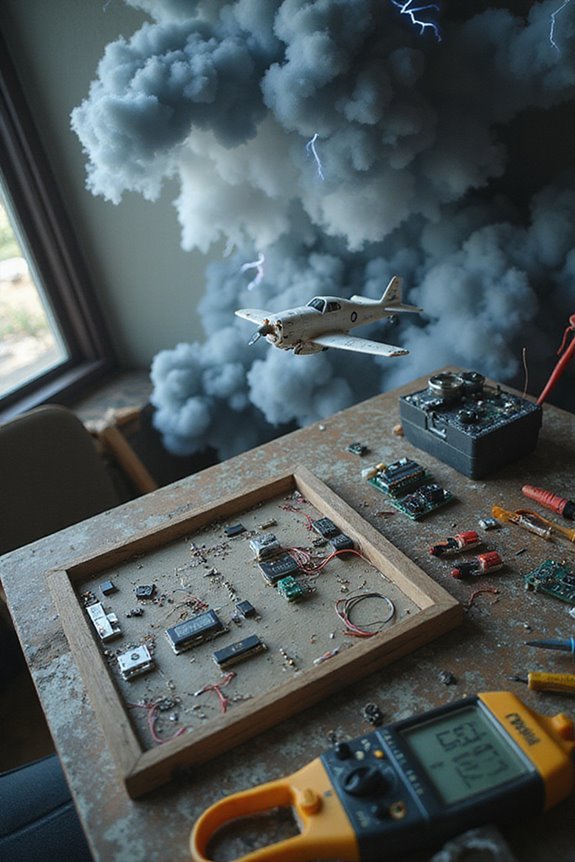
Thunderstorms can really throw a wrench in our flying plans, can’t they? They impact our flight operations in many ways, mainly through flight scheduling. With predictable patterns, airlines can use thunderstorm forecasting to adjust their schedules, helping to dodge high-risk times, especially during the summer months.
Air traffic management is essential, too. When storms pop up, flight routes get adjusted, ensuring safety while also minimizing delays. But let’s be real—navigating around storms can lead to longer flights and extra fuel costs.
Electrical and Structural Risks to Aircraft

Charting a course through stormy skies isn’t just about avoiding turbulence; it’s also about dodging some serious electrical and structural risks to our aircraft. Lightning damage is a major concern. It can punch through the aircraft skin and mess with our communications and navigation systems. Thankfully, our metal-bonded structures usually hold up well, but those composite materials? Not so much. They might suffer delamination, and that’s no joke for structural integrity.
We also face electrical interference from storm clouds. These clouds mess with our instruments, inducing errors or even temporary crew sensory impairments. So, while we might feel like superheroes, storms remind us that we need to respect the skies. After all, nobody wants a surprise from a thunderstorm!
Pilot Challenges in Storm Conditions
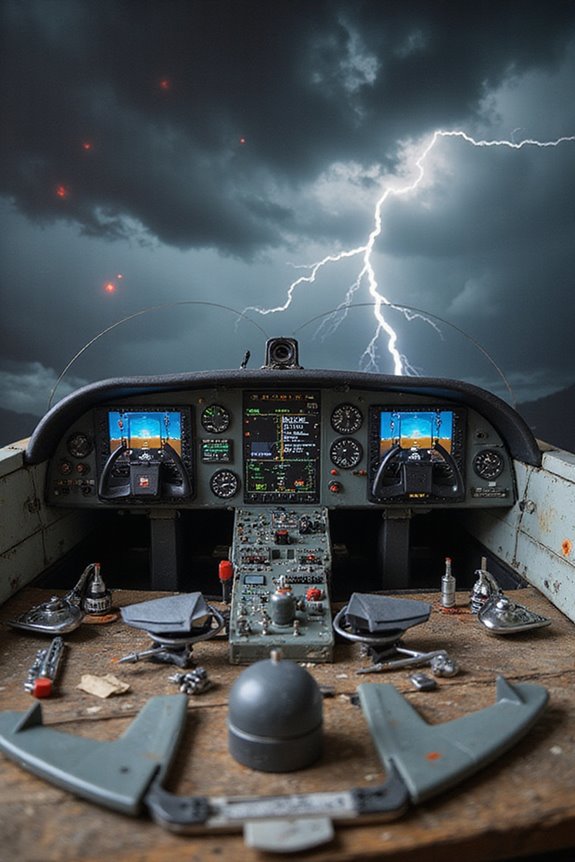
As we steer through stormy skies, pilots face a unique set of challenges that can make even the most seasoned aviator’s heart race. Sudden wind shifts and gusts crank up our pilot workload, demanding quick reactions and sharp focus. Visibility challenges come into play, as heavy rain and fog often turn our instruments into our best friends, while electrical disturbances can threaten those very gadgets.
Imagine trying to maneuver a boat in a wild storm—it’s all about instinct and training. When guiding through low visibility, we must communicate tightly with air traffic control to avoid mishaps. Plus, there’s always that exhilarating dance with turbulence that tests our skills and keeps everyone on their toes (including passengers)! Storms may be exhilarating, but they sure make our jobs interesting.
Implemented Safety Measures in Aviation
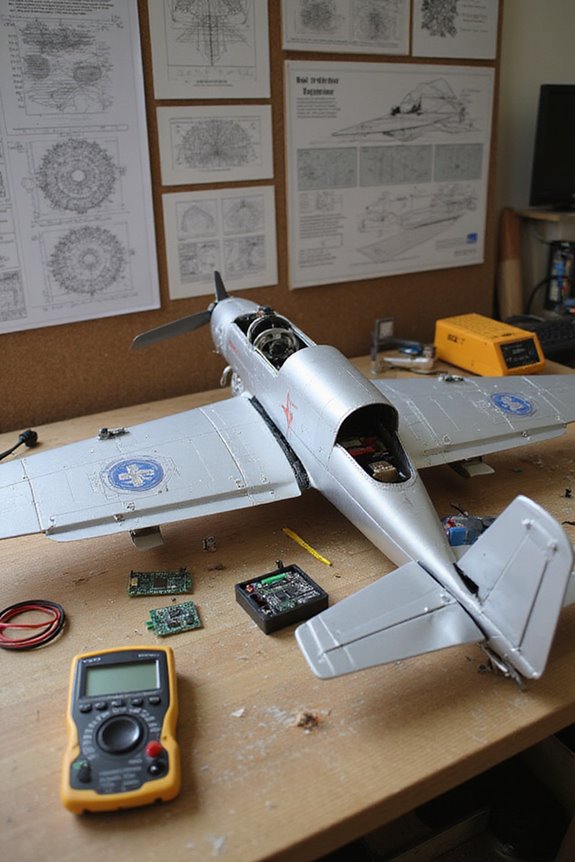
When we take to the skies, it’s not just about soaring through clouds; we’ve got a lot of safety measures in place to keep us above the storm. Advanced weather detection systems alert us to wind changes and storm activity. These systems help us dodge nasty surprises—think of them as our personal weather forecasters!
Communication systems are key too. Continuous updates between pilots and air traffic control guarantee we’re always in the loop about storm developments. Strict safety protocols guide our actions, from preflight planning to dealing with unexpected turbulence. Plus, our aircraft come equipped with robust de-icing technologies to keep wings clear. So, while it might look wild out there, we’ve got our bases covered for a smooth and safe flight!
Economic and Social Consequences of Storm Disruptions
Flying through storms isn’t just a wild ride; it also brings a whole bunch of economic and social headaches. When storms disrupt flights, we face major passenger inconvenience. Cancellations and delays can lead to lost time and even overnight stays at the airport.
These disruptions don’t just bother us; they also hit airlines hard, racking up economic losses. In fact, in 2022 alone, storm-induced flight issues caused an economic impact of about $30–34 billion in the U.S. and $27–32 billion in Europe.
Local economies, especially those dependent on tourism, feel the pinch too. Poor visitor satisfaction and lost commercial opportunities can really shake things up. So next time we fly, let’s remember the wider ripples from those stormy skies!
Advancements in Technology for Navigating Storms
Steering through storms today isn’t just guesswork; it’s a science, thanks to incredible advancements in technology. Thanks to cutting-edge radar technology, systems like the RDR-7000 offer better detection capabilities. They give us a complete vertical view of weather, slashing severe storm encounters by over 50%.
But it doesn’t stop there! With satellite integration, we can extend radar coverage to those hard-to-reach areas, like across oceans. Plus, we can now detect volcanic ash and monitor severe weather globally.
These tools help us make hyper-localized forecasts, predicting turbulence or wind gusts that can impact our flights. So, the next time you’re flying, remember—these innovations help keep us safer in stormy skies, making the skies feel a little less stormy.
Frequently Asked Questions
How Do Storms Affect Passenger Comfort During Flights?
When we think about storms, we can’t ignore their turbulence effects on passenger experiences. Unpredictable bumps and changes can heighten anxiety and discomfort, impacting our overall journey, even if no real danger is present.
Can Pilots Refuse to Fly in Severe Storm Conditions?
Isn’t our safety paramount? We can indeed exercise pilot discretion, refusing to fly in severe storm conditions when our weather assessment indicates dangerous situations. Ultimately, prioritizing safety guarantees both our well-being and that of our passengers.
What Are the Psychological Effects of Flying Through Storms on Pilots?
Flying through storms challenges our emotional resilience, leading to heightened pilot stress. While we respect the storm’s power, our experience and teamwork help us navigate these psychological impacts, allowing us to effectively face such situations together.
How Do Cabin Crew Manage Passenger Anxiety During Stormy Flights?
We recognize it’s unsettling to fly during storms, but our cabin crew excels in anxiety management. They communicate clearly, reassure you, and employ calming techniques to guarantee a safer, more comfortable experience for everyone onboard.
What Types of Storms Pose the Greatest Risk to Aviation Safety?
When we think about the types of storms affecting aviation safety, hail storms and thunderstorm turbulence emerge as significant threats, causing structural damage and dangerous turbulence that can severely compromise safe flight operations.


